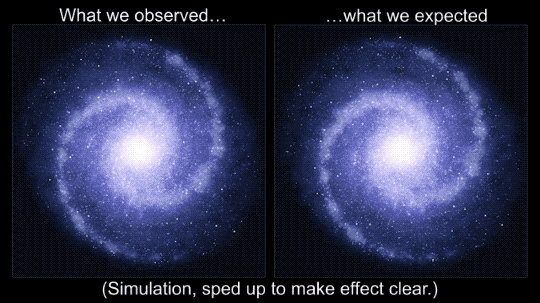
Rotating_Galaxies
This simulation shows two spiral galaxies with material orbiting based on two different mass models. The one on the left shows a galaxy where all of the visible stars rotate at the same angular rate, like an old-fashioned vinyl record on a turntable. The visible material in the galaxy on the right has different rotation rates, depending on how far out from the center they are, with the fastest rotation toward the center. We expected galaxies to exhibit rotation like one on the right, given mass estimates based on the luminous matter alone. However, observations have shown that galaxies rotate more like the galaxy on the left, pointing to a huge amount of matter that is unseen at any wavelength of light that we can detect.
Image Credit: ESO/L. Calçada
- X
https://science.nasa.gov/image-detail/amf-fb12e5b8-6ea9-41c0-8dfe-c8cdcab0256f/
Image CreditESO/L. Calçada
Size540x303px



























